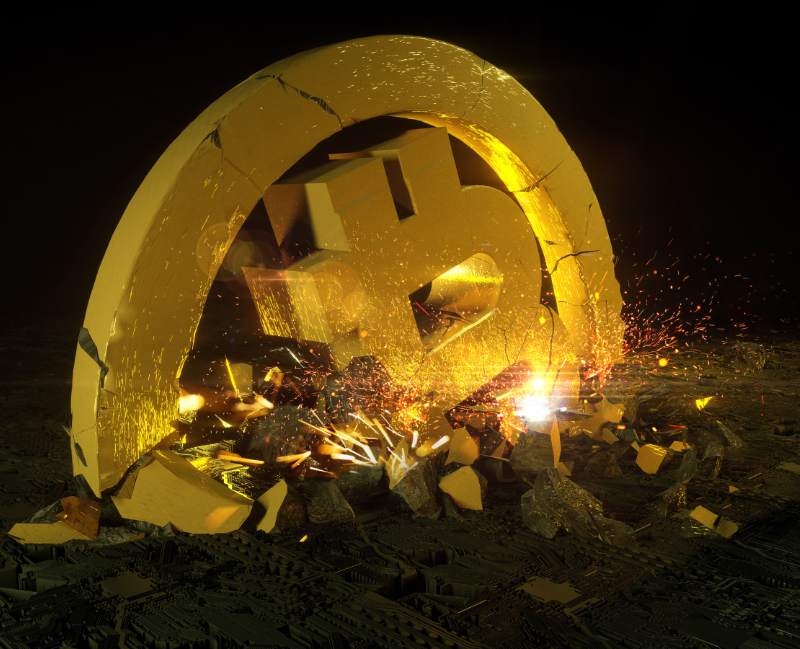Earlier this month (February 10, 2023) the Global Independence Center held a conference in California focused on “Digital Money, Decentralized Finance, and the Puzzle of Crypto.” Premier speaker Christopher J. Waller, Ph.D., a member of the Board of Governors of the Federal Reserve System, shared his thoughts on the crypto ecosystem and some of the risks associated with emerging crypto-currencies.
This is a topic that Stableford has been closely monitoring and Waller’s views closely align with the Stableford perspective on investing in crypto-assets.
3 Parts of the Crypto Ecosystem
Waller begins his speech by exploring the different components of the crypto ecosystem. He divides the crypto ecosystem into three main parts:
- The blockchain
- Crypto-assets
- Related technology
The blockchain is a digital ledger that is fundamental for the creation of crypto-assets and for securely recording information about crypto-asset transactions. This shared public database is made up of blocks that contain transaction data, a timestamp, and the cryptographic hash of the previous block on the chain. New entries can be added to the blockchain, but existing blocks cannot be changed.
Crypto-assets generally fall into two categories: crypto-currencies (Bitcoin is the most well-known) and tokens (such as non-fungible tokens or NFTs). In his speech, Waller explains the value proposition, or lack thereof, regarding these digital assets.

Most objects have value because of their intrinsic properties. For example, corn has value because it can be used for food and fuel. Following this line of thought, objects with no intrinsic value, or no use, should then have no price.
However, the value of some objects is driven by the belief that people will pay for the object, retain it, and sell it in the future. Baseball cards and celebrity autographs are two examples Waller gives of this type of object.
According to Waller, crypto assets are like baseball cards – a speculative asset whose value is based on belief and can drop at any time.
The last component of the crypto ecosystem is other technology associated with crypto-assets. One such technology is smart contracts. According to IBM, smart contracts are “digital contracts stored on a blockchain that are automatically executed when predetermined terms and conditions are met.” These contracts could be used for actions such as releasing funds or sending notifications.
Digital wallet technology gives users access to their crypto-assets, allows for transactions of assets, and proves ownership of digital assets. Tokenization is another emerging technology that converts an asset, or the ownership of an asset, into a digital form.
Watch the full conference, including Christopher J. Waller’s speech, here.
Risks and Rewards of Investing in Crypto-Assets
Waller concludes his speech by emphasizing that understanding the crypto ecosystem with its risks and benefits will help inform crypto investing strategies, as well as ensure we do not unduly limit the development and thus potential positive aspects of the crypto ecosystem.
Some of the most concerning risks include:
- Volatility
- Theft
- Corruption
- Lack of regulation
Crypto is often considered Wild West territory in the world of finance because it is unstable, decentralized, and evolves so quickly. As an investor, it can be difficult to keep up with information and know whom to believe.
 In 2021, financial experts, including Stableford, speculated that cryptocurrency was poised for a crash. That year, the price per Bitcoin rose from approximately $10,000 to nearly $70,000. In 2022, both Bitcoin and Ethereum crashed, losing around 40% and bringing down the entire crypto market.
In 2021, financial experts, including Stableford, speculated that cryptocurrency was poised for a crash. That year, the price per Bitcoin rose from approximately $10,000 to nearly $70,000. In 2022, both Bitcoin and Ethereum crashed, losing around 40% and bringing down the entire crypto market.
Following this collapse, several prominent crypto-related firms filed for bankruptcy. The risk is compounded for everyone when you consider that many firms dealing with crypto-assets are new and inexperienced. Combined with the extreme fluctuations in crypto values, this has resulted in devastating losses to both investors and associated businesses.
Nevertheless, digital assets and crypto-related technology, when regulated in the form of a central bank digital currency (CBDC), may have benefits, including:
- More efficient transactions
- Accessibility
- Protecting funds
- Promoting trust and assuring accountability
Stableford has previously shared thoughts on the value, volatility, and future of cryptocurrency in the blog, “What is the Future of Cryptocurrency as a Financial Investment?”
Moving Forward with Emerging Currencies
Despite warranted trepidation, it appears that digital currencies are here to stay. Since the crash in 2022, bitcoin is regaining value and slowly rising, even in the face of skepticism and negative market sentiment.
The Federal Reserve will release its FedNow service this year with plans to launch its own CBDC – “FedCoin” – in the near future. “FedCoin” would be a digital dollar issued, backed, and regulated by America’s Federal Reserve, making it stable and less prone to the risks associated with cryptocurrencies.
Understanding both the ecosystem and risk management are crucial for crypto investment. At Stableford, we take a client-first approach to financial advising that involves understanding a client’s unique situation, communicating openly, and minimizing risk to help protect and grow client wealth.
Stableford will continue to monitor the changes in the crypto ecosystem. Our experienced team of financial advisors can help you determine if crypto investment may benefit your portfolio and devise a prudent approach to investing.
For more information about crypto investment or how Stableford can help protect and grow your financial legacy, call 480.493.2300 or contact us to schedule a complimentary 15-minute consultation.

